Landscaping a hillside can be a daunting task, especially when you’re working with a tight budget. However, with some creativity and strategic planning, transforming a sloping yard into a beautiful, functional space is entirely possible. In this article, we will explore a variety of hillside landscaping ideas that are not only budget-friendly but also add aesthetic and practical value to your property.
Assessing Your Hillside Landscape
Before diving into specific landscaping ideas, it’s essential to assess your hillside. Understanding the slope, soil type, drainage patterns, and sunlight exposure will guide your planning process and help you select appropriate plants and materials. A steep slope might require different solutions compared to a gentle incline.
Erosion Control Solutions
One of the primary concerns with hillside landscaping is erosion. Here are a few cost-effective methods to manage and prevent soil erosion:
1. Ground Covers
Using ground covers is an economical way to stabilize the soil. Plants such as creeping thyme, vincaminor, and creeping juniper not only help control erosion but also add greenery and texture to your hillside. These low-maintenance plants spread quickly, covering bare soil and preventing runoff.
2. Mulching
Mulching is a simple yet effective technique to reduce erosion and retain soil moisture. Organic mulch, such as wood chips or straw, can be spread over the soil surface. Mulch helps to keep the soil in place during heavy rains and also enriches the soil as it decomposes.
3. Terracing
Creating terraces on a hillside can be a bit more labor-intensive but is highly effective in controlling erosion. By building retaining walls or using natural stone, you can create flat areas where water can be absorbed rather than running off. Terraces also provide more planting space and can be constructed using affordable materials like reclaimed wood or concrete blocks.
Incorporating Functional Features
A hillside doesn’t just have to be about plants; incorporating functional features can enhance the usability and beauty of your landscape.
1. Steps and Pathways
Adding steps and pathways is a practical way to navigate a hillside garden. You can construct steps using gravel, wooden logs, or stone slabs, which are budget-friendly and blend well with natural surroundings. Curved pathways can lead the eye through the garden, creating a sense of exploration and intrigue.
2. Seating Areas
Creating a seating area on a hillside can turn it into a cozy retreat. A simple bench made from reclaimed wood or stone placed at a vantage point can provide a peaceful spot to enjoy the view. Surround it with low-maintenance plants to create a serene atmosphere.
3. Water Features
While large water features can be expensive, smaller ones like a cascading water fountain made from stacked pots or a simple pond can be quite affordable. These features add a tranquil element to your garden and can help with water retention on a slope.
Plant Selection for Hillside Gardens

Choosing the right plants is crucial for a successful hillside landscape. Here are some plant categories that thrive on slopes:
1. Drought-Tolerant Plants
Hillsides can often have areas with poor water retention. Planting drought-tolerant species like sedum, lavender, and ornamental grasses can ensure your garden remains lush without constant watering.
2. Native Plants
Native plants are adapted to local conditions and require less maintenance. They are ideal for hillside landscaping because they can handle the specific climate and soil conditions. Consider using native shrubs, wildflowers, and grasses to create a natural and sustainable garden.
3. Perennials
Perennials are an excellent investment for hillside gardens. Plants like daylilies, hostas, and ferns come back year after year, providing continuous coverage and color. They help in reducing erosion and require less upkeep compared to annuals.
Creative Landscaping Ideas
Here are some creative and budget-friendly ideas to transform your hillside landscape:
1. Rock Gardens
Rock gardens are perfect for sloped areas and require minimal maintenance once established. Use a mix of large boulders, pebbles, and gravel to create interesting patterns and textures. Plant drought-tolerant and low-growing plants like succulents and alpine plants between the rocks for a natural look.
2. Edible Gardens
Transform your hillside into a productive space by planting an edible garden. Use terraces to grow herbs, vegetables, and fruit shrubs. This not only makes use of the space effectively but also provides fresh produce for your kitchen.
3. Wildflower Meadow
A hillside is an ideal spot for a wildflower meadow. Planting a mix of wildflower seeds can create a colorful, low-maintenance landscape that supports local wildlife. This type of garden is budget-friendly as it requires minimal soil preparation and watering.
DIY Projects for Hillside Landscaping
Taking on some DIY projects can significantly reduce costs and add a personal touch to your hillside landscape:
1. Pallet Projects
Old pallets can be repurposed into various garden features. Build pallet planters for herbs or flowers, or construct a vertical garden to maximize space. Pallets are often available for free or at a low cost from local businesses.
2. Homemade Compost Bins
Creating a compost bin from recycled materials can help enrich your soil and reduce waste. Use an old trash can or wooden crates to build a simple compost bin. Composting adds valuable nutrients to your garden soil, promoting healthy plant growth.
3. DIY Garden Art
Add personality to your hillside garden with DIY art projects. Paint rocks, create wind chimes from recycled materials, or build birdhouses. These small touches can enhance the beauty of your landscape without breaking the bank.
Maintenance Tips for Hillside Landscapes
Maintaining a hillside garden requires some specific strategies to keep it looking its best:
1. Regular Inspections
Regularly inspect your hillside for signs of erosion or plant health issues. Early detection allows you to address problems before they become severe.
2. Pruning and Weeding
Keep plants healthy by pruning and weeding regularly. This helps to control plant growth, reduces competition for resources, and maintains the overall appearance of your garden.
3. Watering Wisely
Use efficient watering methods such as drip irrigation or soaker hoses to ensure plants receive adequate moisture without wasting water. Mulching around plants also helps to retain moisture and reduce the need for frequent watering.
How do you landscape a steep hill cheaply?
Landscaping a steep hill on a budget involves creative use of affordable materials and low-cost solutions. Here are some tips:
- Ground Covers: Plant low-maintenance ground covers like creeping thyme or juniper to stabilize the soil.
- Mulching: Use organic mulch such as wood chips or straw to prevent erosion and retain moisture.
- Terracing: Build simple terraces with reclaimed wood, stone, or concrete blocks to create flat planting areas.
- DIY Pathways: Construct pathways with gravel, wooden logs, or stone slabs for easy navigation.
- Native Plants: Select native plants that are adapted to the local climate and soil, reducing the need for additional resources.
What is the best landscaping for a slope?
The best landscaping for a slope depends on the degree of the slope and your specific needs. However, here are some generally effective ideas:
- Terracing: Create terraces to manage water runoff and provide flat planting areas.
- Erosion Control Plants: Use plants like creeping juniper, sedum, and ornamental grasses to stabilize the soil.
- Ground Covers: Planting ground covers can help prevent erosion and add greenery.
- Retaining Walls: Construct retaining walls with natural stone, wood, or concrete to hold the soil in place and create planting levels.
- Rock Gardens: Utilize rocks and boulders to create a natural, low-maintenance landscape that is both functional and attractive.
What is the best landscape material for a slope?
The best landscape materials for a slope are those that provide stability, control erosion, and enhance aesthetics. Some effective materials include:
- Natural Stone: Durable and aesthetically pleasing, natural stone can be used for retaining walls, steps, and decorative elements.
- Gravel: Ideal for pathways and drainage areas, gravel is inexpensive and easy to install.
- Mulch: Organic mulch helps to retain moisture, enrich soil, and prevent erosion.
- Wood: Reclaimed wood can be used for terracing, steps, and decorative structures.
- Geotextiles: These fabrics help stabilize the soil and control erosion when used under gravel or mulch.
How to design a hill landscape?
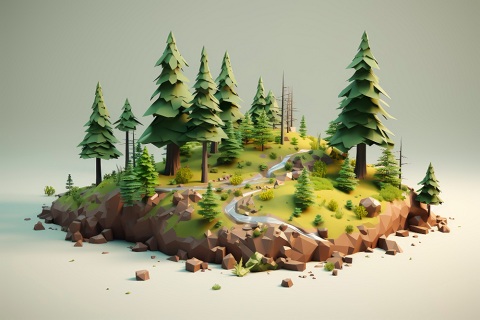
Designing a hill landscape involves careful planning to address slope challenges and enhance beauty. Follow these steps:
- Assess the Site: Evaluate the slope, soil type, sunlight exposure, and drainage patterns.
- Create a Plan: Sketch a layout that includes pathways, planting areas, terraces, and functional features.
- Erosion Control: Incorporate methods such as terracing, ground covers, and retaining walls to manage erosion.
- Choose Plants Wisely: Select plants suited for slope conditions, such as drought-tolerant and native species.
- Add Pathways and Steps: Design pathways and steps for easy access and navigation.
- Incorporate Functional Features: Include seating areas, water features, or rock gardens to enhance usability.
- Regular Maintenance: Plan for ongoing maintenance to keep the landscape healthy and attractive.
What are the 7 steps to landscape design?
The seven steps to landscape design ensure a well-thought-out and functional garden space. Here they are:
- Site Analysis: Assess the current conditions of the site, including soil, slope, and climate.
- Define Your Needs and Wants: Identify the purposes of the landscape, such as recreational space, aesthetic appeal, or erosion control.
- Create a Functional Layout: Develop a basic layout that includes zones for different activities and features.
- Choose Plants and Materials: Select appropriate plants and materials that fit your design and budget.
- Design Details: Add detailed elements like pathways, lighting, and garden art.
- Plan for Maintenance: Consider the long-term care requirements of your landscape and choose low-maintenance options if needed.
- Implement the Design: Start the installation process, beginning with structural elements like terraces and pathways, followed by planting.
By following these steps, you can achieve a beautiful and functional hillside landscape that meets your needs and stays within your budget.
Conclusion
Transforming a hillside into a beautiful landscape doesn’t have to be expensive. By assessing your hillside, controlling erosion, incorporating functional features, choosing the right plants, and engaging in creative DIY projects, you can create a stunning and sustainable garden on a budget. Regular maintenance will ensure your hillside landscape remains vibrant and healthy for years to come.


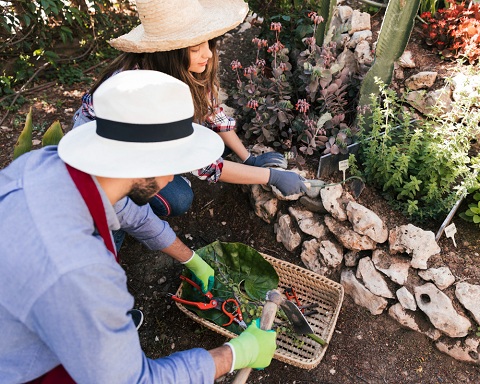
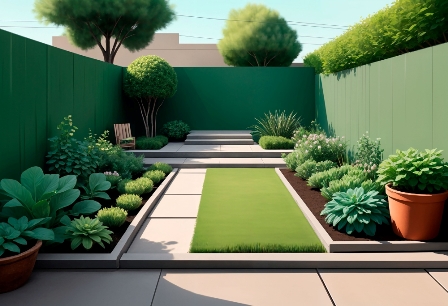




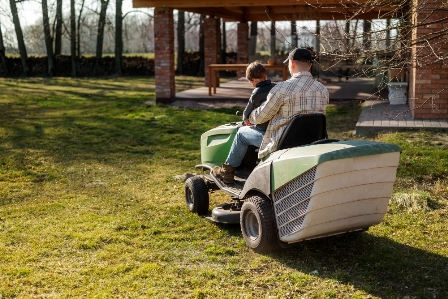
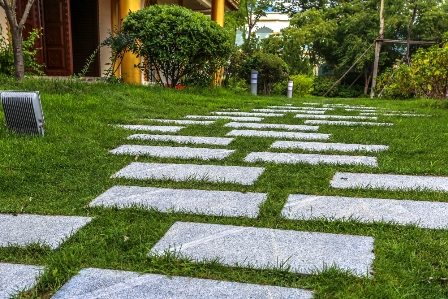
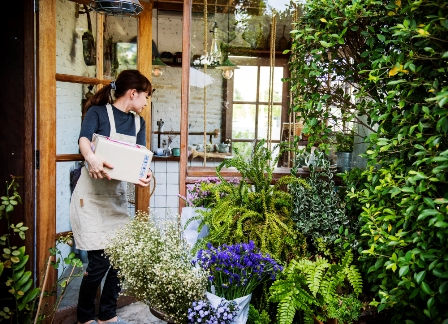
Find Us on Socials